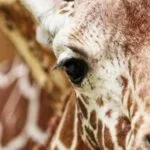Tackling familiar zoo welfare concerns
Modern zoos and aquariums are using sophisticated methods of evaluating animal welfare and ensuring they are providing care that meets an animal’s physical and behavioural needs, while mitigating poor welfare. But despite the advances in animal welfare science, there is still a persistent variation in welfare standards for animals in captivity around the globe.
Our experience suggests there are some familiar welfare concerns found all over the world, that do not differ with geographical location or cultural perceptions. Concerns that are often not that complex, or the result of financial constraint, but instead are the result of not implementing simple operational care practices that underpin meeting the physical and behavioural needs of an animal.
Here are three of the common practices the Wild Welfare team observes when visiting zoos around the world, that can have a real impact on an animal’s welfare
When keepers go home for the night.
The care provided for animals once the doors close on a zoo at the end of the day is as important, sometimes even more important, than during opening hours. From nocturnal species requiring opportunities to be active after dark, to comfortable bedding and nesting opportunities, the quality of care provided can seriously impact an animal’s overall welfare.
All too often, animals can be shut in smaller indoor spaces at night that lack bedding or an appropriate behavioural or socially- stimulating environment.
Animals can sometimes remain indoors for a longer period than that of their outside access! If an animal must be shut inside at night (and this can’t be avoided in many cases), it is important a zoo prioritises efforts to ensure these environments are species appropriate, safe, and encourage natural behaviours, whether that is foraging for food, comfortable sleeping, social or solitary activities.
Animal enclosure design and management.
A good enclosure is key for encouraging an animal’s natural behaviours and positive experiences. While we often see some basic environmental and behavioural enrichment being carried out, it often fails to appropriately meet the animal’s specific needs. Enrichment needs to be regular, incorporating infrastructural (so more permanent) environmental and behavioural enrichment. Both enrichment approaches must be to encourage behaviours that are usually rewarding and positive for that species, who as wild animals have evolved a need to carry them out.
When deciding what environmental and behavioural enrichment is needed, we recommend to staff the What, Why, When approach.
Record-keeping.
Good accurate records are critical, and form an important part of good animal husbandry and care (and in some countries it is a legal requirement for zoos to keep records). All too often though, the opportunity to provide accurate records is not taken, or records are under-utilised in their ability to help monitor and improve animal welfare. From clinical, behavioural and pathological records to enclosure temperature control, cleaning and maintenance schedules, or daily food intake and diets, records enable the monitoring of patterns and can help the early identification of problems, allowing measures to be swiftly put in place to rectify them.
It can be difficult to encourage the adoption of basic operational duties with staff that are already very busy, but it is key to work with the very people taking daily care of the animals in their habitats. The Wild Welfare approach is to start by trying to work out what the barriers might be to carrying out these basic care practices, whether they are purely staff-based or infrastructural and under management control. If we can identify what the blockers are and engage staff with addressing them, with appropriate support and advice, we can achieve positive change for animals.
Contemporary trends in animal welfare science focus on the psychological well-being of animals and holding animals in human care carries with it a burden of responsibility; we have an ethical obligation to consider the welfare of all animals and provide them a respectful environment which promotes optimal welfare conditions.
With tens of thousands of zoos and captive wild animal facilities in existence around the world, housing millions of wild animal species, all with individual and complex needs, it is no small task to ensure they all receive the proper care and welfare they deserve. But in recognising that it is some basic operational practices – found commonly in all corners of the globe – that can compromise an animal’s ability to thrive, we can help ensure all zoos properly fulfil their responsibility for animal welfare.





